Have you ever wondered what secrets lie hidden beneath your feet as you walk through a bustling city? In Seattle, the answer is a captivating journey into its past, quite literally beneath the streets. Like many, I was unaware of the subterranean world until a friend, Anita, and I embarked on the “Beneath the Streets” tour. Join us as we delve into the shadowy tunnels and uncover the intriguing history that shaped Seattle, guided by the knowledgeable Eowyn.
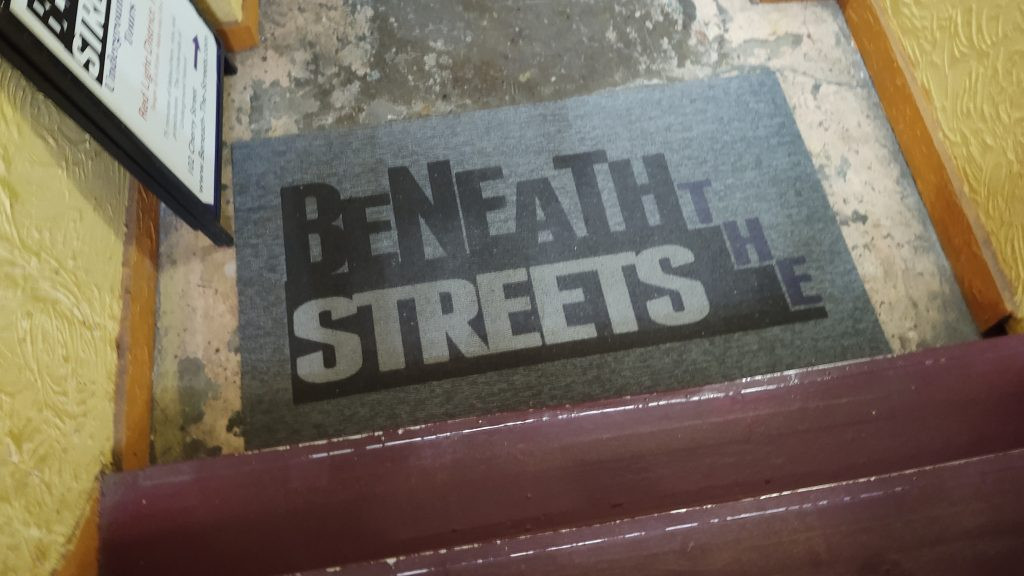 Entering the Seattle Underground Tour at Pioneer Square
Entering the Seattle Underground Tour at Pioneer Square
Seattle’s Origins and Naming
Seattle stands out as the only major US city named after a Native American leader. In 1852, European settlers honored Chief Si’ahl, leader of the Duwamish and Suquamish tribes, by naming their settlement after him. The name “Si’ahl,” pronounced “See-ahish,” proved challenging for English speakers, leading to the adoption of “Seattle.” Chief Si’ahl was a significant figure who fostered alliances among local tribes and embraced cultural integration through interracial marriages.
For millennia, the Duwamish and Suquamish people inhabited Jijilaetch, a village of longhouses located in what we now know as Pioneer Square, the historical heart of Seattle. Their lives were deeply connected to the tides of Elliot Bay, thriving for over 10,000 years on the abundant seafood harvested at low tide.
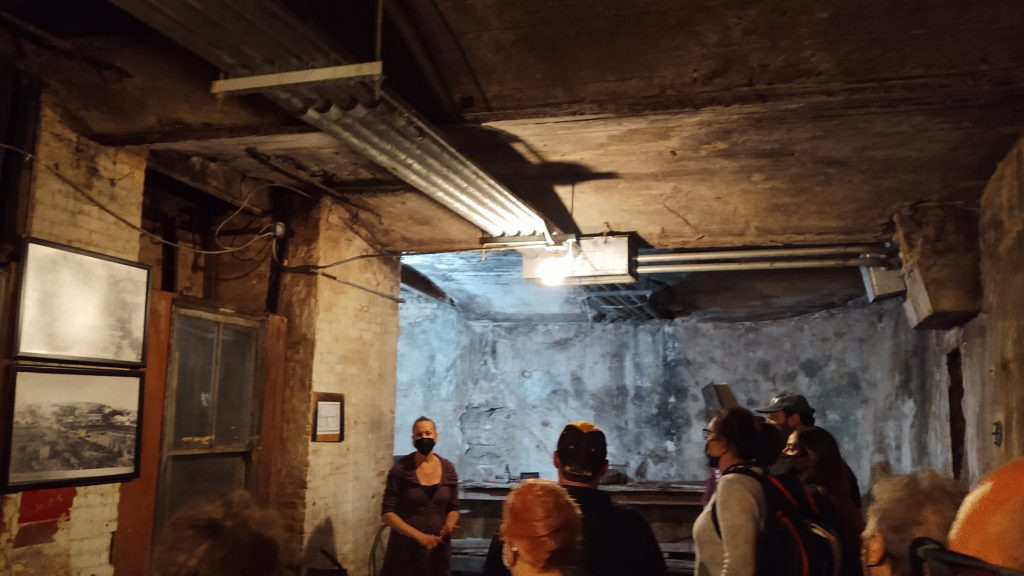 Our Informative Guide Eowyn Morningstar Leading the Seattle Underground Tour
Our Informative Guide Eowyn Morningstar Leading the Seattle Underground Tour
Early Seattle, established on a tidal mudflat of Elliot Bay, faced considerable challenges from the 1850s onwards. Roadways were perpetually muddy, as the tide surged as far inland as Second Avenue twice daily. To combat the mire, the predominantly male population, largely lumberjacks, resorted to covering the wet streets with sawdust. This makeshift solution, however, created unstable ground, akin to quicksand, and as the sawdust decomposed, it generated unpleasant odors. Sanitation was rudimentary and further complicated by the fluctuating tides, posing significant health concerns.
The Lumber Era and “Skid Row”
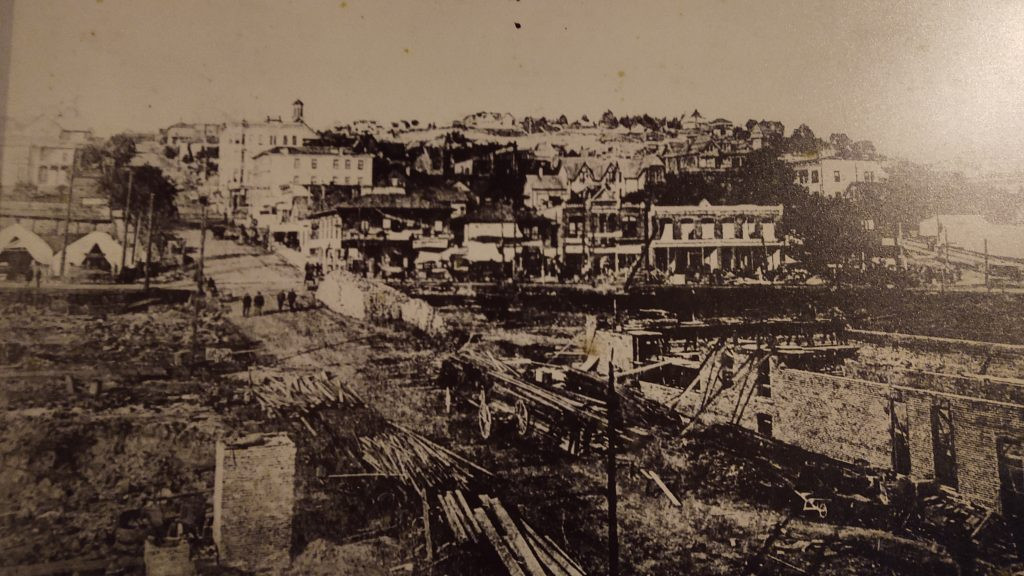 Yesler's Steam Powered Lumber Mill, a Pioneer of Seattle's Industry
Yesler's Steam Powered Lumber Mill, a Pioneer of Seattle's Industry
Yesler’s Lumber Mill, the first steam-powered mill in the United States, operated continuously, 24/7. It heavily relied on Native American labor alongside the influx of single men drawn to the Pacific Northwest. This industrial activity spurred rapid population growth, from a mere 302 residents in 1860 to 3,500 by the 1880s.
The term “Skid Row” itself originated in Seattle. It described the road where oxen skidded logs downhill to the mill. This area became notorious for attracting less savory activities. Drinking, gambling, and prostitution flourished along “Skid Road,” preying on men returning from arduous work in the forests. The area earned unflattering nicknames like “Cesspool of Sin,” “Red Light District,” and “Port of Pleasure,” reflecting its reputation.
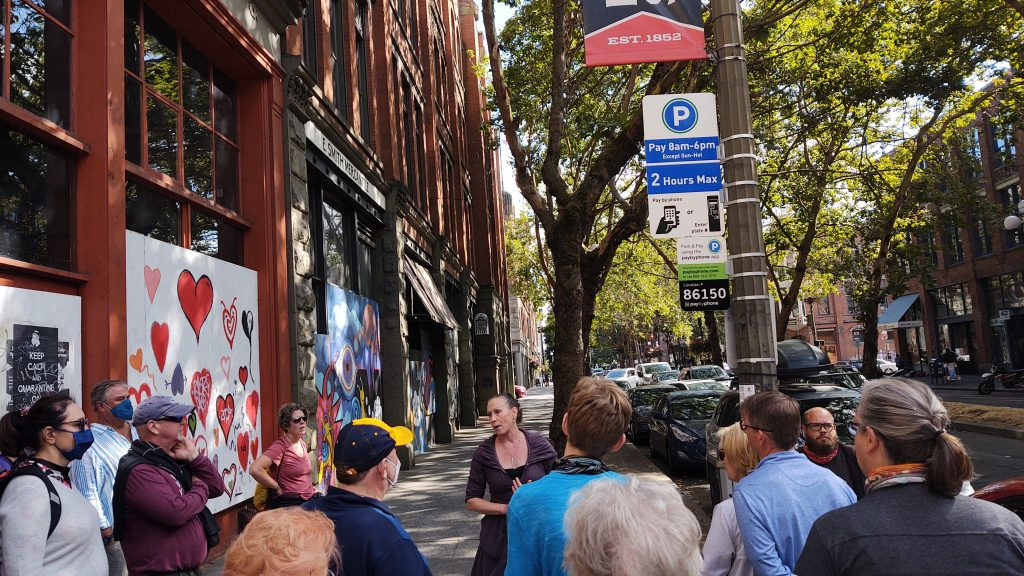 Exploring Historic Skid Row with the Beneath the Streets Tour Guide
Exploring Historic Skid Row with the Beneath the Streets Tour Guide
The Great Seattle Fire of 1889
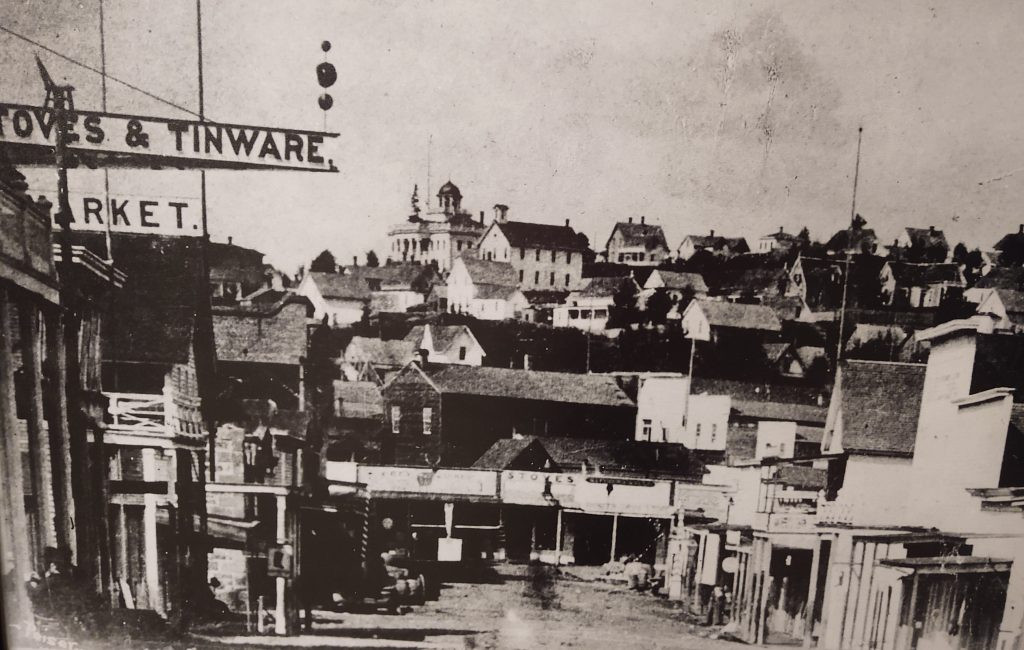 The Great Seattle Fire of 1889 Devastating Pioneer Square
The Great Seattle Fire of 1889 Devastating Pioneer Square
On a humid Thursday in June 1889, disaster struck. A glue pot boiled over in a carpentry shop, igniting turpentine-soaked wood shavings. The ensuing grease fire was exacerbated by attempts to extinguish it with water, which only spread the flames further. Compounding the catastrophe were short fire hoses, inadequate water pressure due to low tide, and the prevalence of wooden buildings. Within a short time, a staggering 33 blocks of wooden businesses and homes were reduced to ashes.
Rebuilding Seattle: Rising from the Ashes
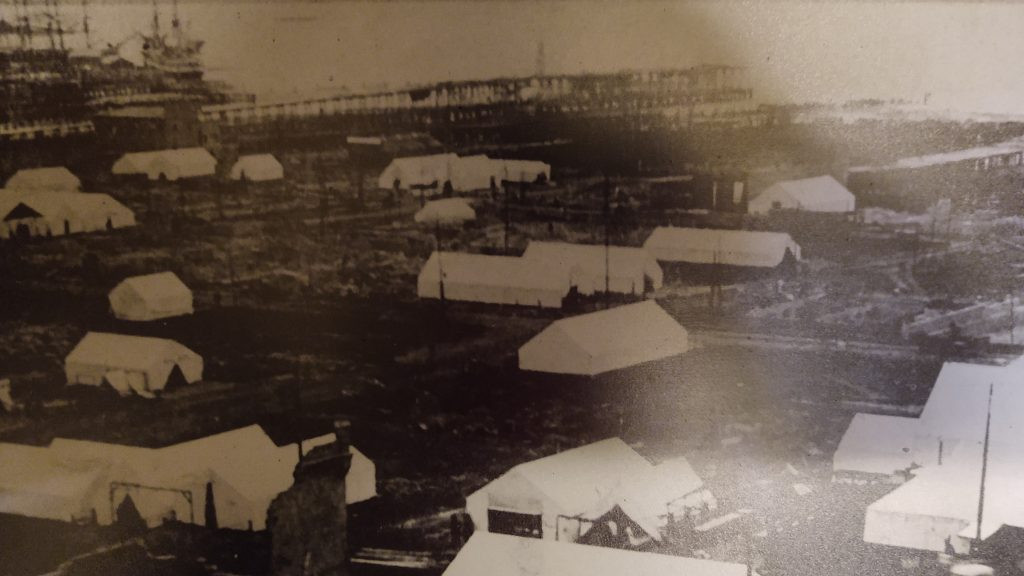 Tent City: Temporary Housing After the Great Seattle Fire
Tent City: Temporary Housing After the Great Seattle Fire
Demonstrating remarkable resilience, the pioneers of Seattle displayed extraordinary grit. Undeterred by the devastation, they erected a tent city and immediately began planning a better, more resilient city. This temporary tent city lasted only a year as reconstruction efforts rapidly gained momentum.
Following the complete destruction of downtown Seattle, the community resolved to rebuild with meticulous planning. Wooden structures were promptly banned. To establish a superior water and sewage system, the decision was made to raise the new brick buildings significantly, between ten and forty feet higher than the original street level, facilitating effective plumbing and sanitation.
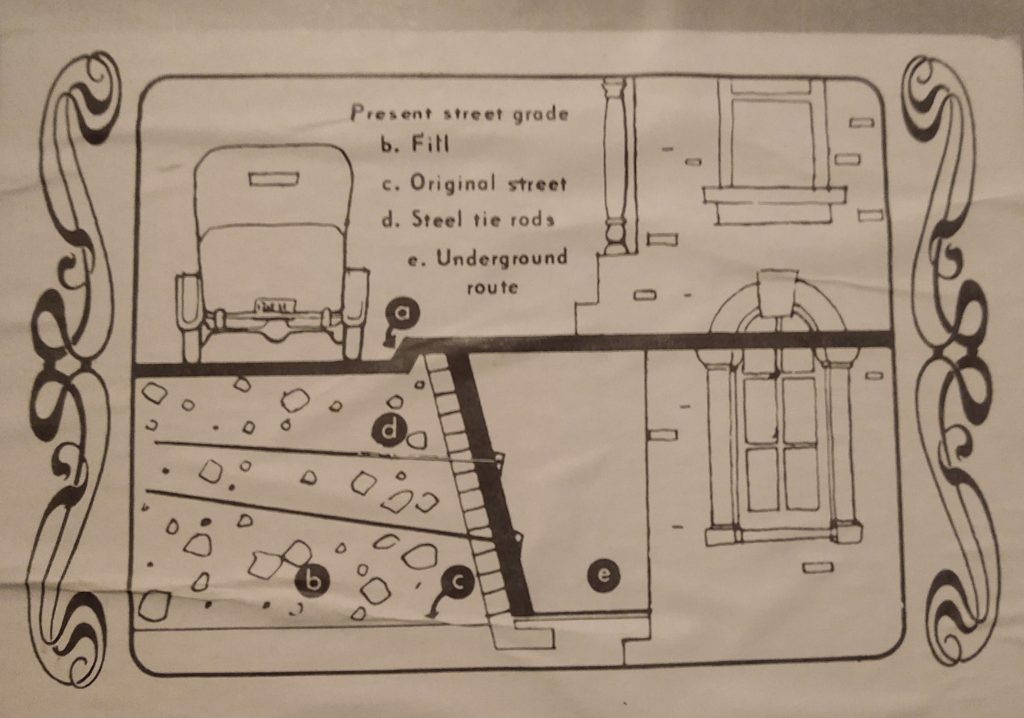 Diagram Illustrating Seattle's Elevated Rebuilding Post-Fire
Diagram Illustrating Seattle's Elevated Rebuilding Post-Fire
The city embarked on an ambitious project, constructing the new Seattle at least one story above the old ground level. Roman arches were employed to support the elevated sidewalks, creating structurally sound passageways beneath.
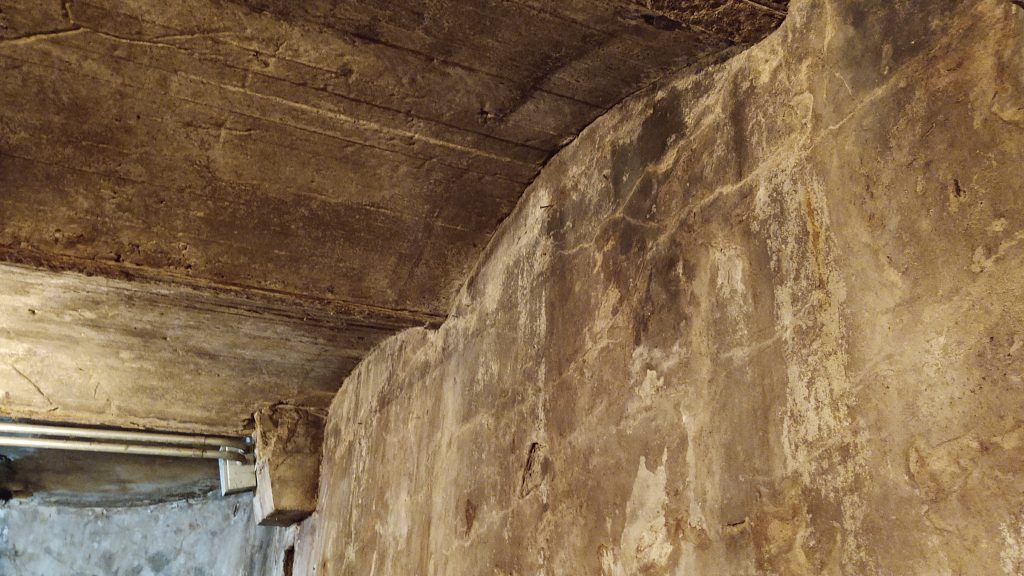 Roman Arches Supporting Seattle's Underground Sidewalks
Roman Arches Supporting Seattle's Underground Sidewalks
Skylights, crafted from colored glass by various manufacturers, were integrated into the sidewalks to illuminate the underground spaces with natural light. These skylights remain visible throughout Pioneer Square today, offering glimpses into the hidden levels below.
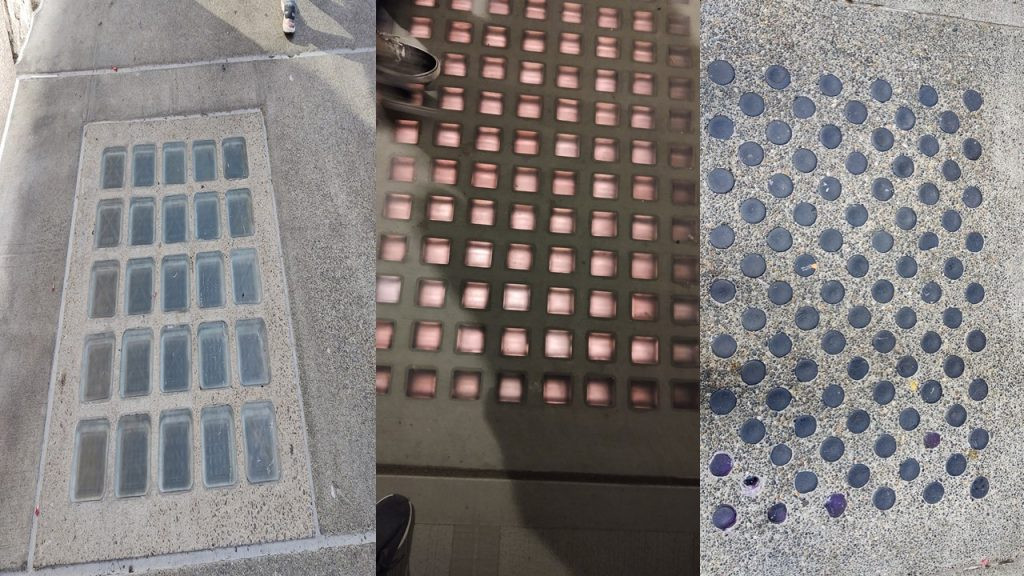 Seattle Sidewalk Skylights: Illuminating the Underground Passageways
Seattle Sidewalk Skylights: Illuminating the Underground Passageways
Elmer Fisher’s Architectural Impact
Our “Beneath the Streets” tour with Eowyn continued above ground, along sidewalks showcasing the elegant architecture of Elmer Fisher. His collection of twelve buildings, distinguished by graceful archways, stood in stark contrast to the more utilitarian boxy structures erected in haste after the fire.
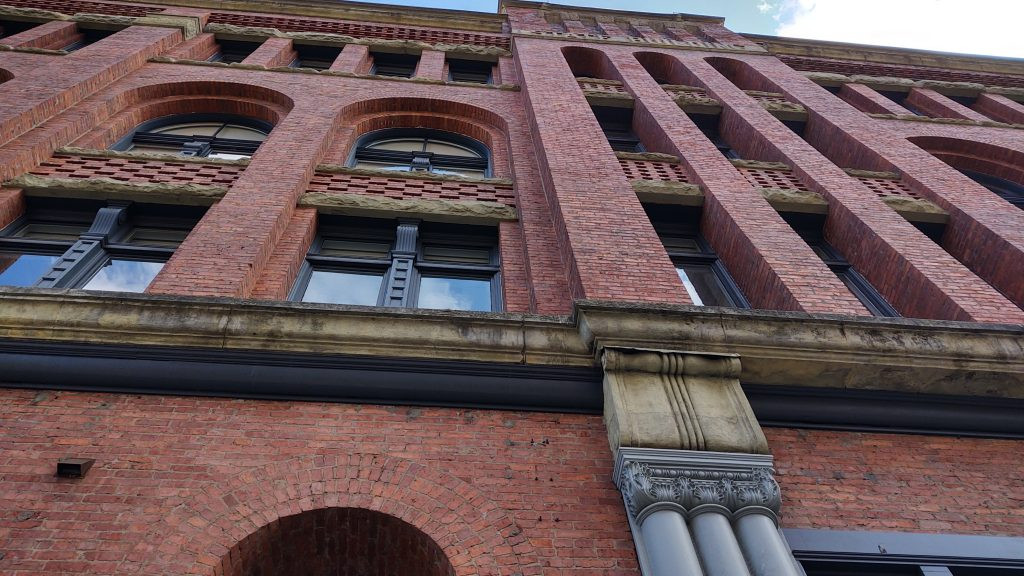 Elmer Fisher's Elegant Post-Fire Architecture in Pioneer Square
Elmer Fisher's Elegant Post-Fire Architecture in Pioneer Square
Remarkably, within just three years, downtown Seattle was rebuilt and fully operational, boasting improved infrastructure and a more comfortable urban environment. Scottish-born Elmer Fisher played a crucial role, contributing to the design of fifty buildings in the twelve months following the devastating fire.
Seattle and the Alaskan Gold Rush
In 1896, Seattle’s fortunes surged again as it became “the gateway to the gold fields” with the onset of the Alaskan Gold Rush. Hordes of hopeful prospectors flocked to Seattle, preparing for the arduous journey to Alaska in pursuit of riches. A Canadian law stipulated that anyone traversing their country to reach the gold fields, approximately 200 miles from Seattle, must possess “one ton of goods,” representing a year’s worth of supplies.
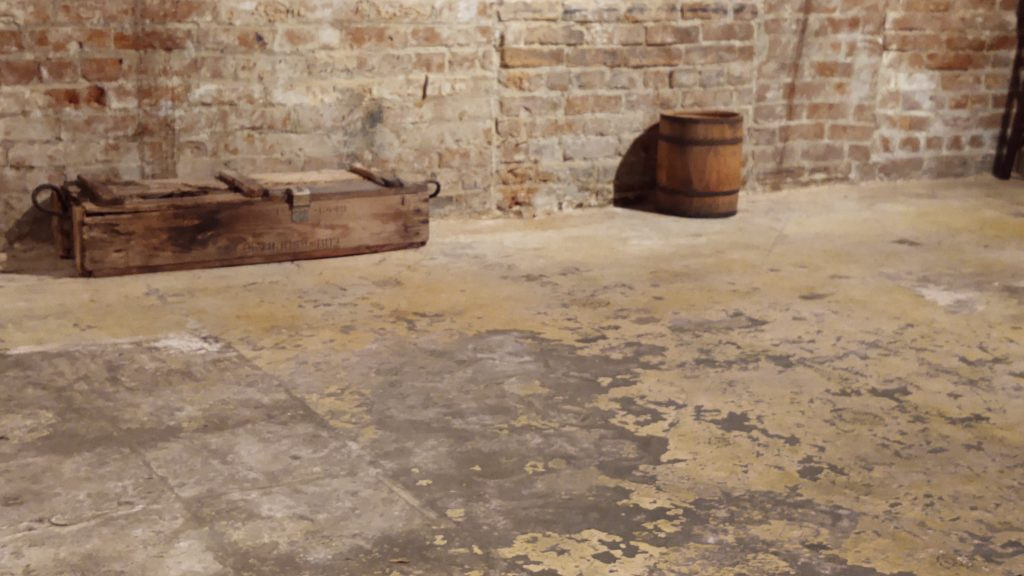 Stampeders' Supplies for the Alaskan Gold Rush Era in Seattle
Stampeders' Supplies for the Alaskan Gold Rush Era in Seattle
Seattle businesses boomed as approximately 70,000 “stampeders” gathered their provisions, including 1,500 pounds of food, warm clothing, and mining equipment. While awaiting passage to Alaska, these prospectors engaged in gambling and patronized brothels, leading to widespread corruption. Theft and bribery became commonplace, and even the mayor resigned to join the gold rush, seeking his own fortune in the north.
Prohibition and Underground Seattle
Eowyn led us down an alley and into another brick structure, descending into the depths beneath the streets of Seattle. She recounted the era of Prohibition, ushered in by the Volstead Act, the 18th Amendment, effective January 17, 1920. This law prohibited the “manufacture, sale and transportation of intoxicating liquors,” initially intended to conserve grain during WWI. Despite President Woodrow Wilson’s support, Americans found ingenious ways to circumvent the law.
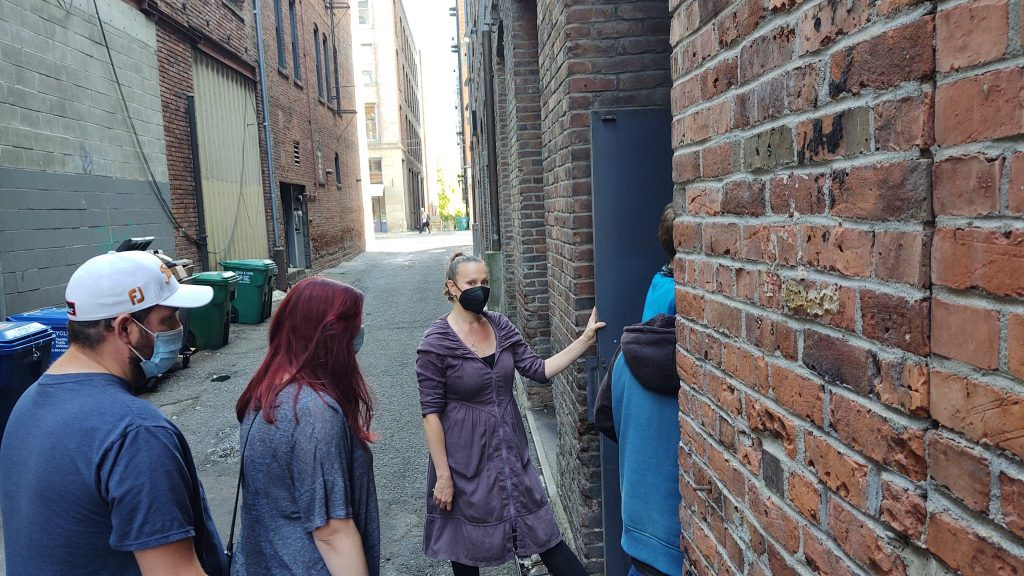 Mysterious Passages Beneath Seattle's Streets during the Underground Tour
Mysterious Passages Beneath Seattle's Streets during the Underground Tour
Beneath the streets of Seattle provided the ideal clandestine location for these illicit activities. Secret rooms and tunnels became havens for speakeasies, where people gathered to discreetly consume alcohol, speaking “easy” to avoid attracting law enforcement.
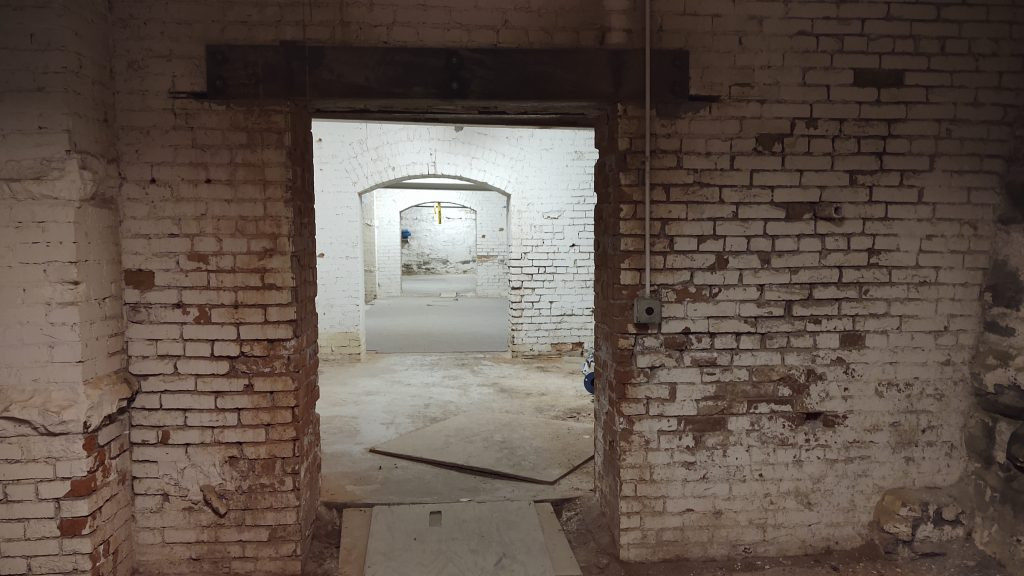 Underground Speakeasy Gambling during Seattle's Prohibition Era
Underground Speakeasy Gambling during Seattle's Prohibition Era
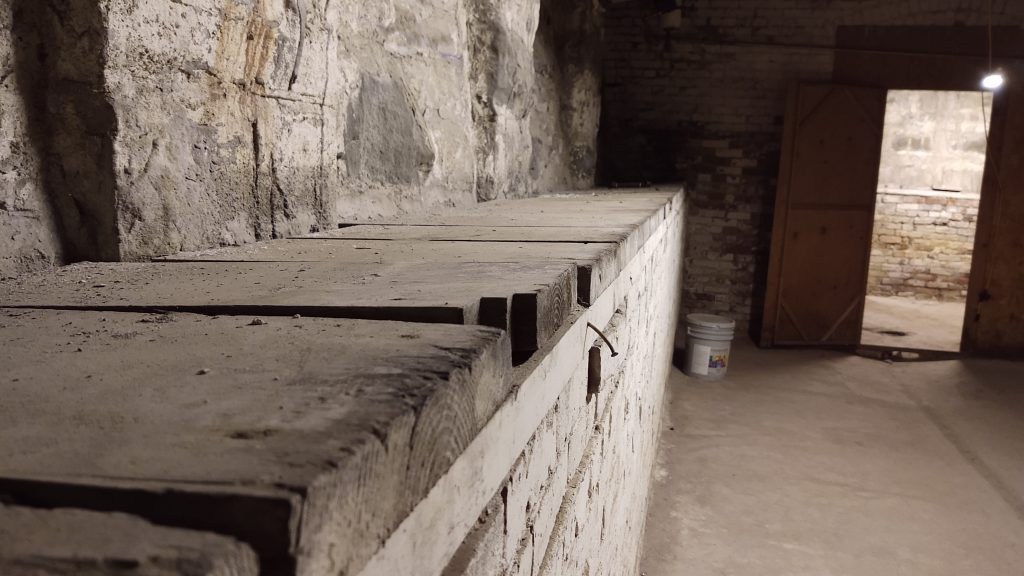 Hidden Moonshine Storage in Seattle's Underground Tunnels
Hidden Moonshine Storage in Seattle's Underground Tunnels
Illegal operations thrived beneath Seattle’s avenues. Corruption extended to law enforcement, with many officers accepting bribes to overlook or even facilitate illegal liquor distribution. Some officers even acted as lookouts, blurring the lines between law and lawlessness during this tumultuous period. Trust became a rare commodity in this environment of hidden agendas and underground dealings.
FBI Sting Operations and Pioneer Square’s Revival
Corruption persisted in Seattle from the 1880s through the 1970s. The FBI established an office in Seattle in 1914 and conducted investigations for decades. In the 1970s, Operation ABSCAM resulted in the conviction of seven members of Congress for corruption related to businessmen and stolen property, highlighting the deep-seated issues within the city’s underbelly.
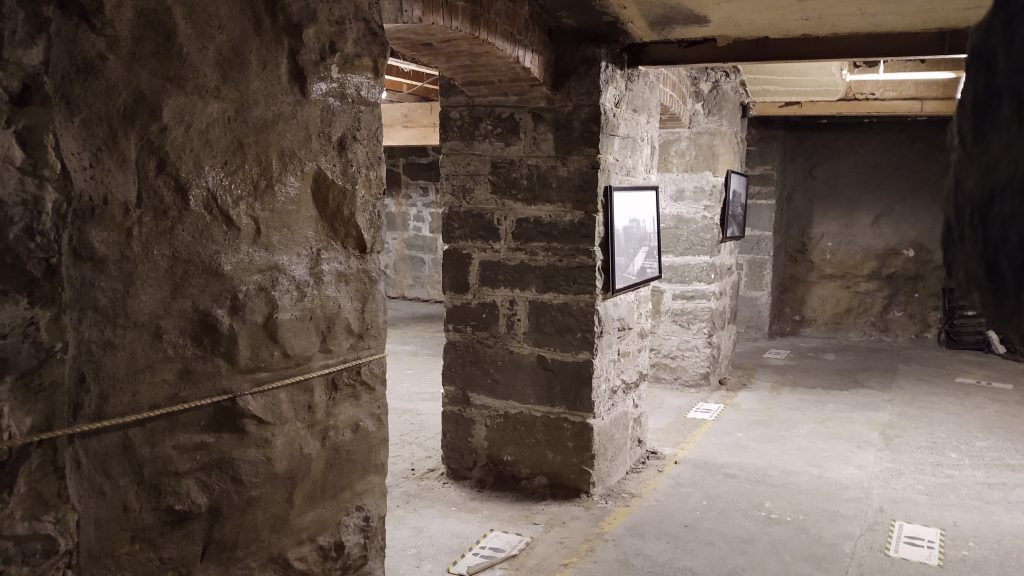 Secret Meeting Place Beneath the Streets of Seattle
Secret Meeting Place Beneath the Streets of Seattle
In the early 1960s, Pioneer Square began a transformation into an art district. Artists, attracted by inexpensive buildings, converted them into studios, galleries, and art spaces, breathing new life into the historic neighborhood. By 1970, Pioneer Square became Seattle’s first designated historical district, ensuring the preservation of its unique character and history. Today, eight historical districts in Seattle are monitored by a review board enforcing strict criteria for any structural modifications.
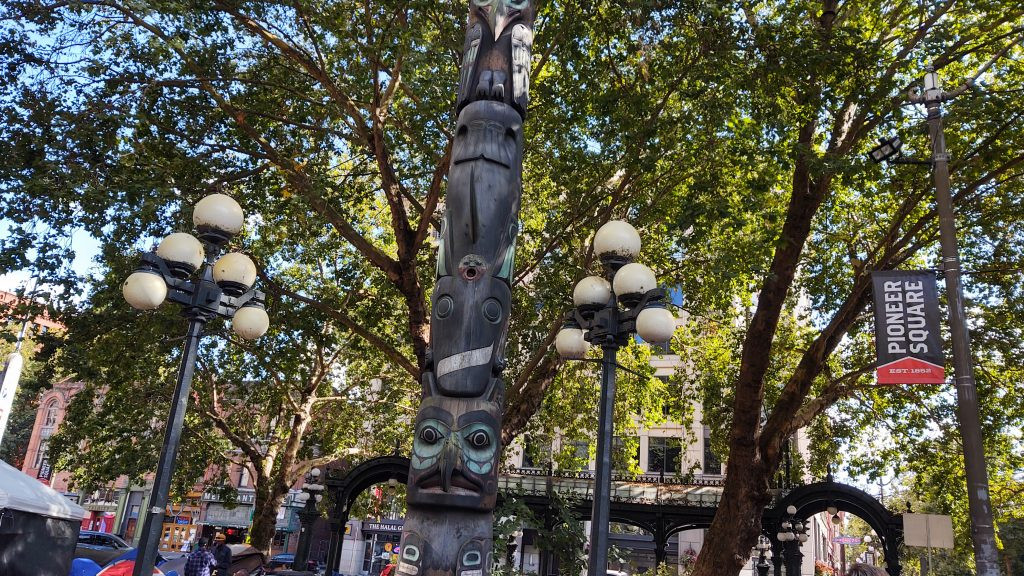 Raven Clan Totem Pole in Pioneer Square Art District
Raven Clan Totem Pole in Pioneer Square Art District
Exploring Beneath the Streets of Seattle Today
 Anita and the Author Learning Seattle History on the Underground Tour
Anita and the Author Learning Seattle History on the Underground Tour
Seattle’s history is deeply intertwined with the story of the United States, offering a unique and compelling narrative. My “Beneath the Streets” tour with Eowyn provided a fascinating glimpse into this history, yet it feels like only scratching the surface. There is so much more to discover about Seattle’s past, hidden just beneath the modern city we see today. I’m already planning my return to delve deeper!
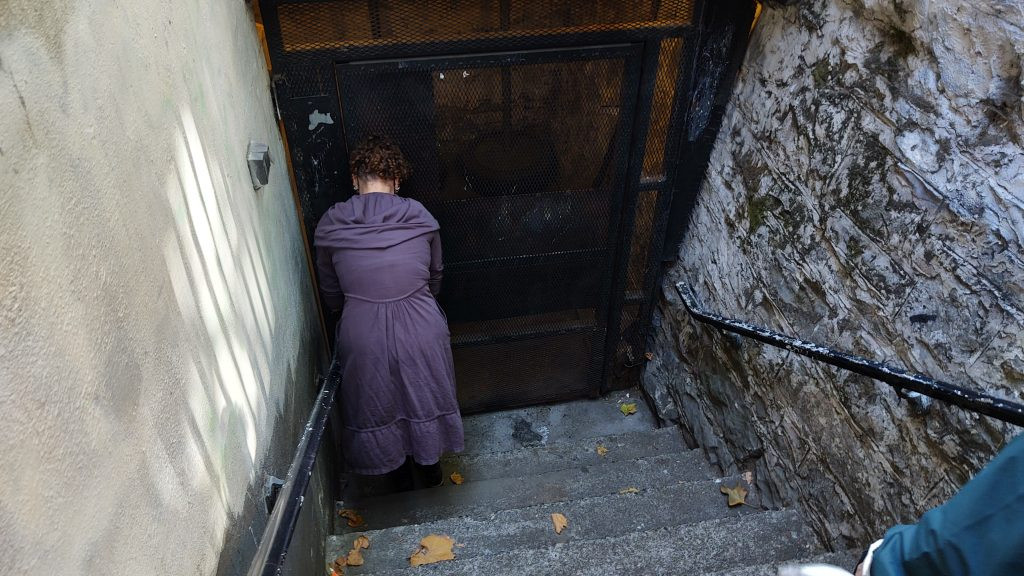 Eowyn Unlocking a Secret Entrance to Seattle's Underground
Eowyn Unlocking a Secret Entrance to Seattle's Underground
Related Links
Explore Restless Viking merchandise here.
Discover the quirky origin of Seattle’s Gum Wall in this article.
Resources
Beneath the Streets Tour Official Website
Keniston-Longrie, Joy. Images of America: Seattle’s Pioneer Square. Arcadia Publishing, 2009.
